Summary: The marketing landscape in 2025 is poised for transformation, driven by AI adoption, video storytelling, voice search, and user-generated content (UGC). AI is revolutionizing marketing by enhancing personalization, creativity, and customer engagement. Tools like ChatGPT and MidJourney streamline content creation, while conversational AI bots, such as those used by Sephora, deliver tailored customer interactions. To stay competitive, marketers must upskill their teams and adapt to AI-driven search trends like Search Generative Experience (SGE). Storytelling through short-format videos is another key strategy, with platforms like TikTok and Instagram leading the way. Campaigns like Reebok’s “CrateMaster” demonstrate the power of concise, mobile-friendly video content to capture attention and resonate with audiences. Meanwhile, the rise of voice search, driven by smart speakers and voice assistants, necessitates optimizing content for conversational, long-tail keywords and exploring voice-activated advertising for deeper consumer engagement. UGC continues to be a powerful tool for building trust and amplifying brand reach. Campaigns like Apple’s “Shot on iPhone” showcase the value of authentic consumer contributions in fostering loyalty and driving social media engagement. By embracing these strategies, marketers can align with evolving consumer preferences, build stronger connections, and achieve success in an increasingly dynamic digital environment.
Know More About Marketing Strategy:
- Best retail marketing strategies for 2025
- 5 Growth Marketing Strategies for 2025
- 4 Essential Insights for Developing Your Brand Marketing Strategy
- 5 Ways Hyperlocal Brands Can Add Newspaper Ads to their Local Marketing Strategies
In this comprehensive guide, we delve into the top marketing strategies and trends that are likely to shape the marketing landscape in 2025. From AI driven personalization to the increasing importance of sustainability and purpose-driven initiatives, we explore the key pillars that will underpin successful marketing campaigns in the coming year. Whether you’re a seasoned marketer or a business leader seeking to refine your approach, this article aims to provide actionable insights into the strategies that will define success in 2025 and beyond.
1. Adoption of AI will have to be a part of your Marketing Strategy.
In today’s hyper-connected world, the adoption of AI (artificial intelligence) has become increasingly prevalent across functions, especially marketing. From crafting creative campaigns to enhancing customer care, AI has revolutionised the way brands interact with their audience. Let’s talk about how generative and conversational AI are reshaping marketing strategies and what this means for marketers and chief marketing officers (CMOs).
Generative AI
Marketers are already jumping on the ChatGPT and MidJourney bandwagon to leverage the power of AI to create briefs for creative agencies, create videos from scratch, and simply provide textual prompts. This not only reduces the cost & time required in video production, but also makes them super productive/
Conversational AI: Your 24/7 Sidekick
Say goodbye to boring, one-size-fits-all messages! Today, it’s all about putting your audience first. That means understanding their wants, needs, and preferences better than anyone else. That’s where conversational AI comes in. It powers those handy chatbots that chat with customers day and night.
Take the example of Sephora, a renowned beauty brand notorious for its extensive product offerings. By deploying conversational AI bots, Sephora simplifies the decision-making process for customers, making it easier for them to find what they want by guiding them through lots of options and helping them discover products that match what they like. This not only fosters a deeper connection with consumers but also generates valuable insights for the brand.
Implications for Marketers and CMOs
The widespread adoption of AI presents both opportunities and challenges for marketers and CMOs. While investing in AI can significantly reduce production costs and streamline operations, harnessing its full potential requires the right talent and a strategic approach.
Marketers must prioritise upskilling their teams to leverage AI tools effectively. From data analysis to content optimization, proficiency in AI-driven techniques is essential for staying competitive in today’s market, and it’s not just for big corporations, even small businesses can benefit from this.
Furthermore, CMOs need to create a culture of experimentation and innovation. By continuously exploring new AI applications and technologies, brands can stay ahead of the curve and deliver exceptional experiences to their customers.
Higher adoption of AI in marketing represents a paradigm shift in how brands engage with their audience. From creative content generation to personalized customer interactions, AI offers unparalleled opportunities for growth and differentiation. By investing in AI capabilities and fostering a culture of innovation, marketers and CMOs can navigate the evolving landscape of marketing with confidence and agility.
AI-Driven Search Results Will Reshape Brand Visibility
Search Generative Experience (SGE) that uses AI to answer people’s questions on search engines is gaining popularity with over 90% of search engines showing SGE results first. 50% of users prefer SGE results over the conventional results pages. But this popularity of AI in search engines could make it harder for brands to be seen. As SHE becomes more common on search engines like Google and Bing, brands might get less traffic from regular search results. So, businesses must adapt to such discoverability techniques in order to stay visible.
Data privacy & compliance
While people like to share a lot on social media, they are, however, vary of sharing personal information with brands.. They want to know that companies are using their data in a safe and fair way. So, companies need to be very clear about how they use people’s data and make sure they’re following the rules about data protection. By being honest and careful with people’s information, companies can show that they’re trustworthy. This helps build a good reputation with customers and keeps them coming back.
2. Storytelling through Videos
In a world buzzing with activity, catching and holding attention has become an art form. Enter short-format videos – the superheroes of modern storytelling. These brief yet impactful clips have revolutionised how we share narratives and market brands.
The Rise of Short Format Videos
Short format videos, typically ranging from a few seconds to a few minutes in length, have gained immense popularity across various social media platforms such as TikTok, Instagram, and Snapchat. These videos are designed to capture viewers’ attention quickly and deliver a message or story in a concise and compelling manner. With the average attention span of internet users decreasing, particularly among younger demographics, short-format videos offer an ideal solution to engage audiences in a fast-paced digital environment.
Reebok’s “CrateMaster,” directed by renowned designer Kerby Jean-Raymond, stands as a testament to the potential of short-format videos to convey powerful narratives. It’s not just about shoes; it’s a story about a kid turning the streets into his basketball court. It’s heartwarming, it’s creative, and it’s all wrapped up in a few minutes of video magic.
What it Means for Marketers
The success of campaigns like “CrateMaster” underscores the importance for marketers to adapt to evolving consumer preferences. Creating content in the formats that resonate with the audience is paramount.
3. Creating Content for Mobile Consumption
One of the key principles for successful video marketing is to create content that fits how people watch videos. Since most people here use mobile devices to watch content, it’s crucial for marketers to make videos that work well on phones. This means making videos that can be viewed vertically, using attractive visuals and graphics, and keeping the content short and sweet.
Short videos are becoming more popular because of mobile phones and social media. By using these platforms, marketers can tell stories that really connect with Indian audiences. For example, Reebok’s “CrateMaster” is a great example of how this can work—it grabs attention and gets people involved. As we move further into the digital age, short videos will become even more important for marketing and storytelling.
4. The Rise of Voice Search: A Marketer’s Guide to Success in 2025
Staying ahead of trends is crucial for success. One such trend that has been steadily gaining momentum is voice search. With research suggesting that there are a staggering 200 million users of voice assistants in the US alone, it’s clear that voice-based search is set to become even more prominent in 2025.
The increase in smart speakers and voice assistants like Amazon’s Alexa, Google Assistant, and Apple’s Siri have fundamentally changed the way users interact with technology.
Optimising content for voice search is a key business marketing strategy that can significantly improve visibility and accessibility. Firstly, focusing on long-tail keywords is essential. Unlike traditional text-based searches, voice queries tend to be more conversational and specific. By incorporating longer, more natural language phrases into your content, you increase the likelihood of matching user queries.
Providing search engines with clear, organised information helps them better understand and index your content, making it more likely to be surfaced in response to relevant voice queries.
But what does this shift towards voice search mean for marketers?
Beyond just optimising content, it opens up fresh avenues for engagement with consumers. The expansion of voice-activated advertising presents exciting opportunities for marketers to connect with their audience in more meaningful ways.
Imagine a scenario where a user asks their smart speaker for recommendations on the best running shoes. Through targeted voice ads, marketers can seamlessly integrate their brand into the conversation, providing valuable suggestions and driving direct engagement with potential customers.
In essence, the rise of voice search signifies a paradigm shift in how consumers discover and engage with content. For marketers, embracing this shift presents both challenges and opportunities. By adopting this approach to optimising content for voice search and exploring innovative avenues for voice-activated advertising, marketers can make successful business marketing strategies for 2025.
5. Harnessing the Power of User-Generated Content:
One marketing strategy that continues to stand out for its effectiveness in building trust, fostering engagement, and amplifying brand reach: is user-generated content (UGC). Campaigns that encourage users to share their experiences with a product or service not only instill a higher level of trust in the brand but also lead to increased engagement on social media platforms. Let’s delve deeper into the power of UGC and explore how marketers can leverage this invaluable resource to their advantage.
User-generated content refers to any form of content—be it text, images, videos, or reviews—created by consumers rather than brands themselves. This authentic content serves as a powerful tool for marketers due to its inherent credibility and relatability. When users share their experiences with a product or service, they provide genuine insights that resonate with fellow consumers. This authenticity is invaluable in an era where consumers are increasingly wary of traditional advertising tactics.
Case in Point: Apple’s “Shot on iPhone” Campaign
A prime example of a successful UGC campaign is Apple’s “Shot on iPhone” initiative. Recognizing the power of user-generated imagery, Apple invited iPhone users to showcase their photography skills by sharing photos captured on their devices using the hashtag #ShotoniPhone. This campaign not only highlighted the impressive camera capabilities of iPhones but also celebrated the creativity of Apple’s loyal user base.
By curating and featuring these user-submitted photos in its marketing materials, Apple effectively tapped into the passion and creativity of its customers. Moreover, by rewarding users with the opportunity to have their photos showcased on a global platform, Apple fostered a sense of community and belonging among its user base.
For marketers, the benefits of leveraging user-generated content are manifold. By showcasing real experiences and testimonials from satisfied customers, marketers can build credibility and foster trust among their target audience. Additionally, UGC campaigns drive increased engagement on social media platforms, as users become brand advocates, actively promoting the brand to their own social circles. Furthermore, UGC campaigns offer a cost-effective alternative to traditional advertising methods, harnessing the creativity of existing customers to generate compelling content at minimal cost. Finally, by monitoring UGC channels, marketers can gain valuable insights and feedback, informing product development, marketing strategies, and brand positioning.
6. Conscious Consumerism & Marketing Strategies that Encourage Sustainability
People don’t just want stuff; they want stuff that’s good for the planet.That’s what we mean by conscious consumerism & green shopping. It’s about picking products that don’t harm the environment and treat workers fairly. This shift in how we shop is changing how companies sell products. Let’s take a closer look at how brands like Alia Bhatt’s Edamama are leading the way in this eco-friendly shopping trend, and what it means for companies that want to succeed in the future.
Unique Challenges and Opportunities in Retail Marketing
In the fast-paced world of retail, Indian businesses face unique hurdles and chances. With intense competition and changing consumer preferences, staying ahead requires smart strategies. But with the rise of e-commerce and tech-savvy shoppers, there are also new avenues for growth and innovation.
Driving Foot Traffic and Increasing Sales
To attract more customers and boost sales in physical stores, Indian retailers are getting creative. Tactics like targeted local marketing using apps and social media help reach nearby shoppers effectively. Exciting in-store events, interactive displays, and personalised discounts encourage people to step into shops. Plus, using data to understand shoppers’ habits let’s stores tailor their promotions and layouts for maximum impact.
Examples of Successful Retail Marketing Campaigns
Look at brands like Titan, using AR to let customers try on watches virtually, or Big Bazaar, engaging shoppers with in-store events and promotions. Apps like Reliance Fresh’s JioMart make ordering groceries a breeze, boosting customer loyalty. By blending technology and personalized touches, Indian retailers can thrive in 2025’s dynamic market.
For insights into more retail marketing strategies, tips, and success stories, don’t forget to check out our comprehensive blog. Dive into the world of retail marketing and discover how innovative strategies can elevate your brand’s presence and drive growth. Visit our blog now and stay ahead in the competitive retail landscape!
Event Marketing Strategies
Events are pivotal in Indian retail marketing, offering a potent avenue for building brand awareness and fostering community engagement. In a digitally saturated landscape, events provide a tangible platform for brands to connect with their audience on a personal level. Whether it’s a product launch, a workshop, or a customer appreciation day, events offer an interactive space for brands to showcase their identity and offerings.
Planning and executing successful event marketing campaigns require careful consideration and strategic approach. It’s essential to define clear objectives aligned with broader marketing goals, understand the target audience, and create compelling content that resonates with attendees. Promotion across various channels, offering value-added incentives, and facilitating engagement are key elements for success. Post-event follow-up and measurement of key metrics are crucial for evaluating the effectiveness of the campaign.
Growth Marketing
Growth marketing is all about smart, data-driven tactics to help companies grow. In 2025, this approach becomes even more crucial, focusing on being flexible and using data effectively to fuel growth.
Getting and Keeping Customers
To stay ahead, businesses need to focus on getting new customers and keeping them. Growth marketers use experiments and tweaks to make their strategies work better. They use data to understand what customers want and keep them coming back for more.
Trying New Ideas and Making Them Better
Growth marketing thrives on trying new things and making them work. Whether it’s testing different ads or changing website layouts, marketers use data to figure out what works best. By taking smart risks, businesses find new ways to grow and stay ahead of the competition.
Brand Marketing Strategy: Navigating the Indian Market
Standing Out with Branding:
In today’s bustling Indian market, brand marketing is your ticket to standing out. It’s what sets you apart from competitors, giving your business a unique identity that customers can connect with.
Building Trust with Brand Equity:
Brand equity, or the trust and credibility your brand holds, is crucial. By consistently delivering on promises and providing great experiences, you earn loyalty and positive word-of-mouth from customers.
Crafting Your Brand Identity:
Developing a strong brand identity means understanding your audience and what makes you special. From logos to messaging, everything should reflect your values and resonate with Indian consumers.
Spreading Your Brand’s Story:
Once you’ve defined your brand, it’s time to share it. Use social media, ads, and events to communicate your identity and connect with Indian consumers on a deeper level.
Inspiring Examples from India:
Look at brands like Amul and Fevicol, which have become household names through clever branding. They’ve tapped into Indian culture and emotions, creating lasting connections with customers.
Having a solid go-to-market strategy is crucial for launching new products or expanding into new markets. Let’s break down what this strategy entails and how it can help Indian businesses thrive in 2025.
Go-to-Market Strategy: Key for Success
What is a Go-to-Market Strategy?
A go to market strategy is like a roadmap that guides businesses on how to bring their products or services to market successfully. It’s not just about selling; it’s about understanding the market, finding the right customers, and making sure your product is available where they need it.
Essential Components for Success:
Market Research: Start by understanding your target audience – their needs, preferences, and where they are. This research helps you tailor your offering to meet their expectations.
Product Positioning: Highlight what makes your product unique and why customers should choose it over others. Clear communication of your product’s value is key.
Distribution Channels: Decide how you’ll get your product to customers. Whether it’s through stores, online platforms, or partnerships, choose the channels that work best for your audience.
Take inspiration from companies like Flipkart, who have mastered online sales with targeted marketing and seamless delivery services.Their success underscores the importance of aligning distribution channels with customer preferences and leveraging innovative marketing tactics to capture market share effectively.
For further insights on perfecting your go-to-market strategy in 2025, explore this comprehensive guide.
Edamama: Making Good Stuff for Kids
Alia Bhatt’s brand, Edamama, is a shining example of green shopping in action. Edamama sells clothes and toys for babies, but everything they make is eco-friendly and made in a way that’s fair to workers. They use natural materials, treat their workers well, and try to leave as little waste as possible. That’s why people love Edamama – they’re not just buying cute clothes; they’re supporting a brand that cares about the planet and the people on it.
In the age of conscious consumerism, authenticity is paramount; companies must genuinely prioritize environmental concerns to earn customer trust. Beyond profits, finding alignment with societal values strengthens connections with consumers, fostering a deeper sense of purpose. Transparency is key; sharing the journey towards sustainability builds credibility and establishes lasting relationships. Moreover, companies should educate and engage customers, transforming green shopping into a collective effort towards a better world.
Conclusion
In conclusion, the way marketing works is rapidly changing. The prominence of AI is ironic in the sense that instead of taking away human jobs, it’s actually going to be creating new ones, wherein marketers need to look for talent that has used AI in their marketing strategies and can leverage its power to reduce production costs and enhance turn around time on projects. In 2025, it’s crucial for marketers to adapt to these changes to keep up with what consumers want.
To succeed in this changing landscape, marketers need to be proactive and ready to adapt, utilizing effective business marketing strategies. We’ve talked about lots of trends and strategies in this blog, and it’s clear that being open to new ideas and understanding what consumers like are key to doing well.
In short, being successful in marketing now means being quick to change, being creative, and knowing what people like. By keeping up with the latest trends, trying new things, and always thinking about what customers want, marketers can face the challenges ahead and make the most of their opportunities.
Frequently Asked Questions
How are Indian businesses harnessing AI for personalized marketing in 2025?
Artificial Intelligence (AI) is no longer just a buzzword; it’s a game-changer for Indian businesses in 2025. The blog delves into how businesses are using AI-driven insights to analyze consumer data, decipher individual preferences, and craft personalized content that resonates with the diverse tapestry of India. It explores the role of AI in customer support through chatbots and predictive analytics, raising intriguing possibilities for tailored marketing messages.
Why is sustainability marketing gaining importance in India’s consumer landscape?
The transformation in India’s consumer landscape is highlighted in the blog, where eco-conscious consumers emerge as influential players. The FAQs explore the reasons behind the rise of sustainability marketing in 2025, discussing how businesses can weave environmental commitment into their strategy. It raises questions about the potential marketing revolution where a brand’s narrative intertwines with its contribution to the well-being of the Earth.
How does video marketing evolve in 2025, and why is it crucial for Indian businesses?
The blog emphasizes the continued appeal of video content in India’s digital landscape. FAQs delve into the specifics of video marketing evolution, such as short-form videos, live streaming, and interactive content. It explores the unique opportunities that platforms like TikTok and Instagram Reels offer Indian businesses, shedding light on the cultural richness of India that makes video storytelling a powerful tool for engaging a diverse audience.
What makes influencer marketing effective for Indian businesses in 2025?
Influencer marketing remains a potent strategy, and the FAQs explore why it thrives in 2025. It delves into how Indian businesses capitalize on the reach and credibility of influencers, offering insights on how brands can stand out by aligning with influencers whose values resonate with their own. The FAQs highlight the authenticity and persuasiveness that influencer collaborations bring to the marketing landscape.
How does localized content marketing build trust in India’s diverse market?
The FAQs shed light on the importance of localized content marketing in India’s richly diverse landscape. They explore how businesses can tailor content to regional preferences, incorporate vernacular languages, and showcase an understanding of local festivals and events. The focus is on building trust and engagement at the grassroots level by resonating with specific cultural nuances.
Why are interactive experiences crucial for marketing success in 2025?
The FAQs highlight the significance of interactive experiences in the evolving marketing landscape. They delve into the role of gamification, quizzes, polls, and other interactive elements in capturing audience attention and stimulating active participation. The FAQs emphasize how these strategies go beyond passive consumption, fostering deeper connections with the audience and paving the way for sustained success in the competitive market landscape.
Ready to take your brand to the next level? Connect with us today to explore how HT Media can amplify your presence across our diverse portfolio of 25+ brands and properties. Let's turn your brand vision into reality!

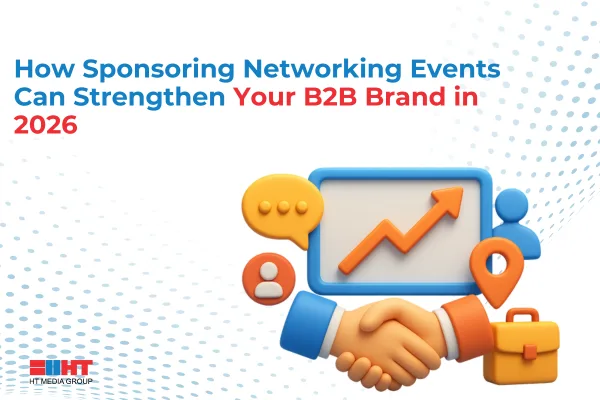
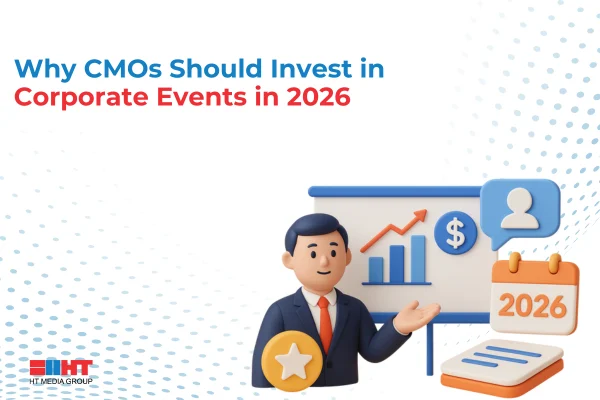
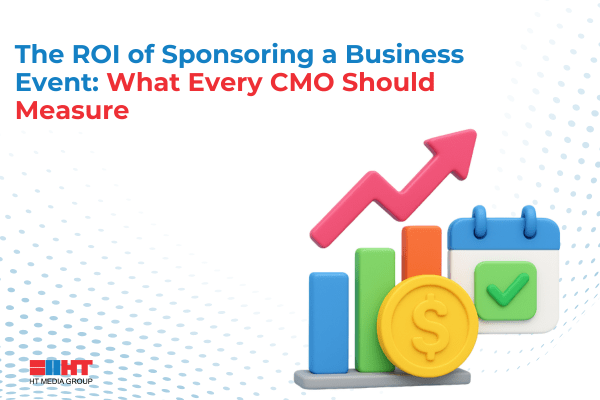


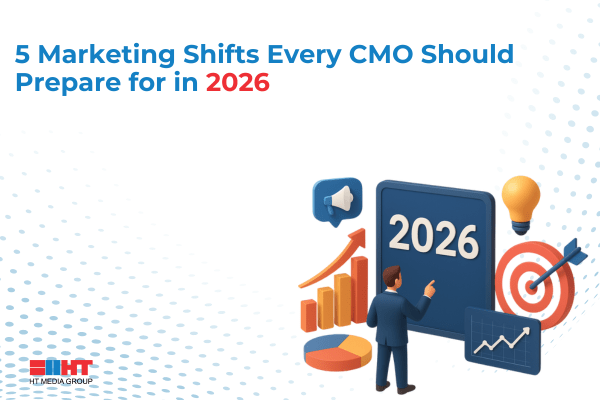
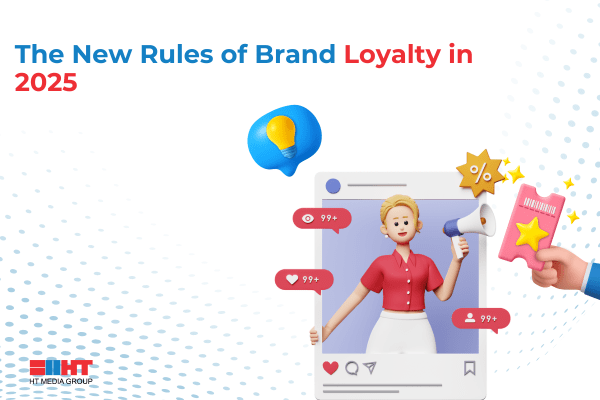

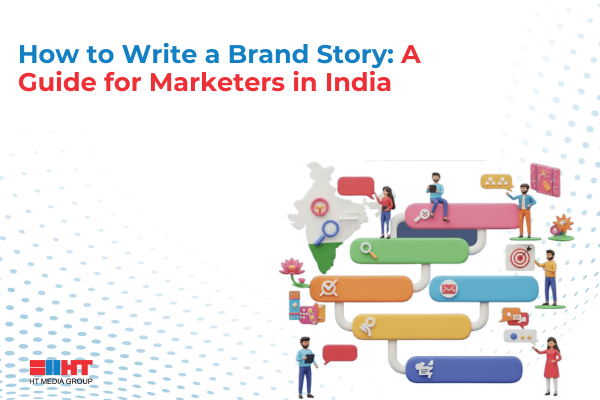
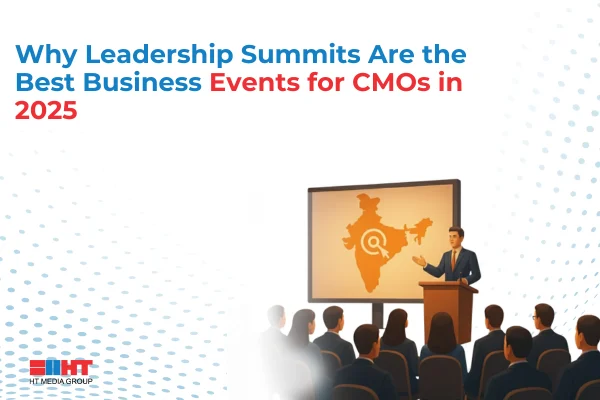
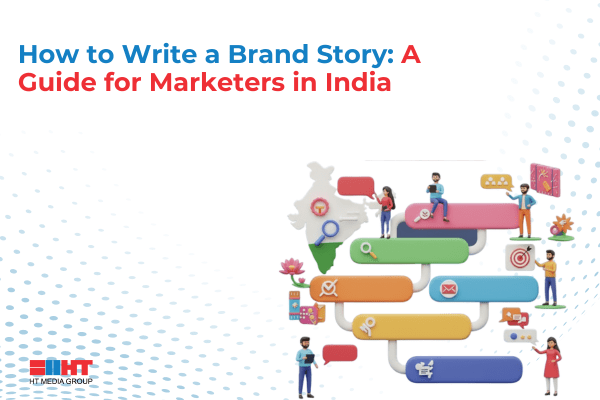
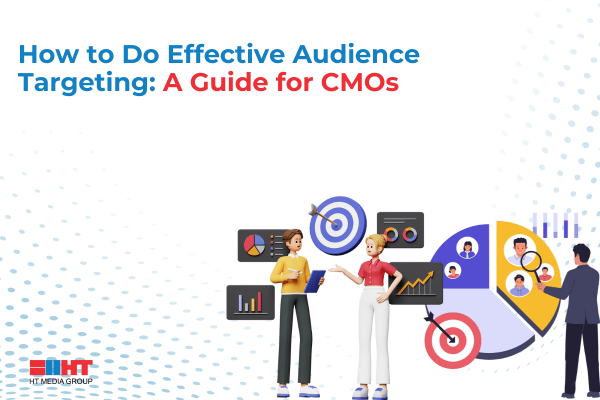
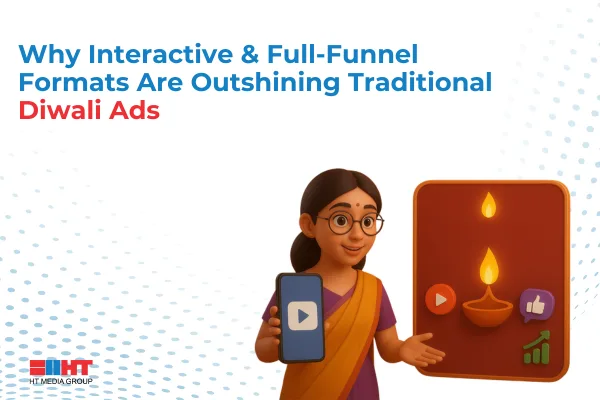

Comment